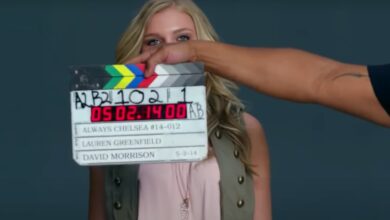Passing the mother-in-law test
As new gadgets, widgets and technological bits of online trickery arrive every day, is all that extra complexity such a good thing for your website after all?
Recently, my mother-in-law has been living with us. No, this article isn’t going to devolve into a litany of mother-in-law jokes and clichés. Instead, she has unwittingly illustrated to me a problem that afflicts many websites I come across every day.
Being a modern household, we have a lot of entertainment equipment: the big telly, games console, media server, DVD player, audio system, etc. Yet, after months of living with us, my mother-in-law is still lost. Switching on Home and Away now sends her fleeing to the portable telly in the bedroom instead.
She grew up with television that was one-click technology. Now, watching TV requires a number of devices being turned on in a strict order to the right settings and locating the correct application on the menu that pops up on the screen; do you want to stream audio or video, live TV, ABC iView, YouTube, a game, the internet or a number of additional options and settings? Too much information and too many decisions for someone merely wanting to catch up on events in Summer Bay with her evening cuppa.
It makes me consider how other families cope with the modern technological living room. Are children still able to switch on the telly in the morning without having to wake Dad to reboot the media server? Are elderly relatives ruining their favorite programs by accidentally switching the audio amp to one channel while the television displays another? These are all considerations when introducing technologies like this to a wider group. You may be perfectly comfortable with the process, but as families consist of multiple users, everyone has to be taken into account.
Accessibility is a major issue when considering your website technology, too. The number of additional clicks and unfamiliar concepts can turn a seemingly simple task into a chore – one that may be abandoned before completion. It has been known for a long time that every extra click in your checkout process will whittle down the number of potential customers who make it to the end of the transaction. Add to that the confusion of too many gimmicks, distractions, and additional features, and it may be you are turning customers away by trying too hard to be convenient.
Have you ever felt as if you are being offered so many options that you just end up choosing none? It is a recognized behavioral trend that if the brain has too many choices to consider, it may opt for the easier outcome and call the whole thing off. This is why many landing pages on websites focus on only one or two options or paths, particularly when the visitor has come from a particular place. For example, if someone clicks on your Google AdWords link or a specific promotion, you already know what they are looking for and expecting to see. This should make it very easy for you to provide a page that limits options and possible actions to only those relevant to that single transaction.
Asking too much of your customers can turn people away. But also consider that what may be easy for you may be confusing for other sections of your target audience.
I always road-test my technical articles against my non-technical wife because if she ‘gets it, I know my readership will.
Maybe every website owner needs a mother-in-law on hand to test whether their online business is as simple to use as you would hope.




